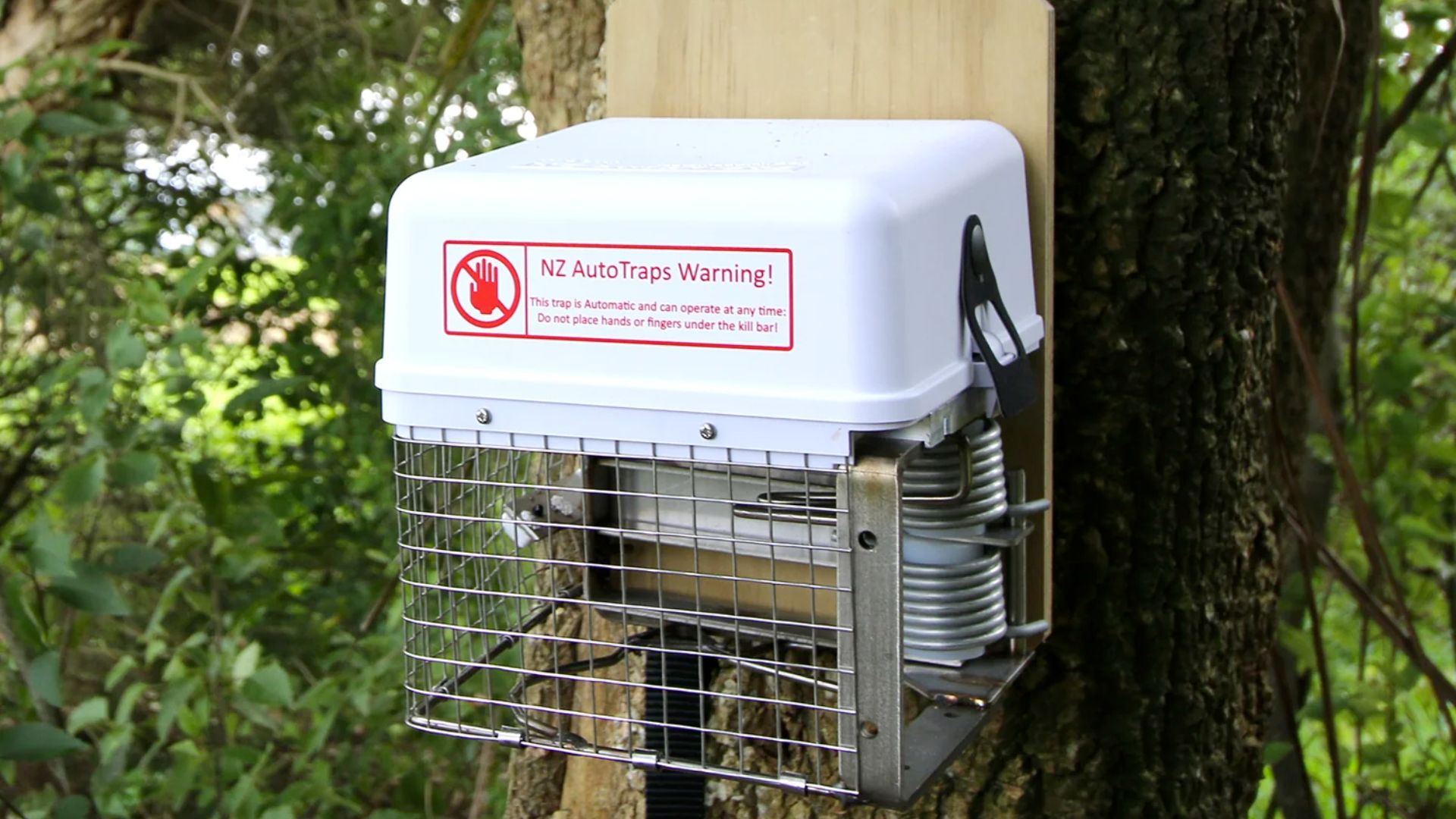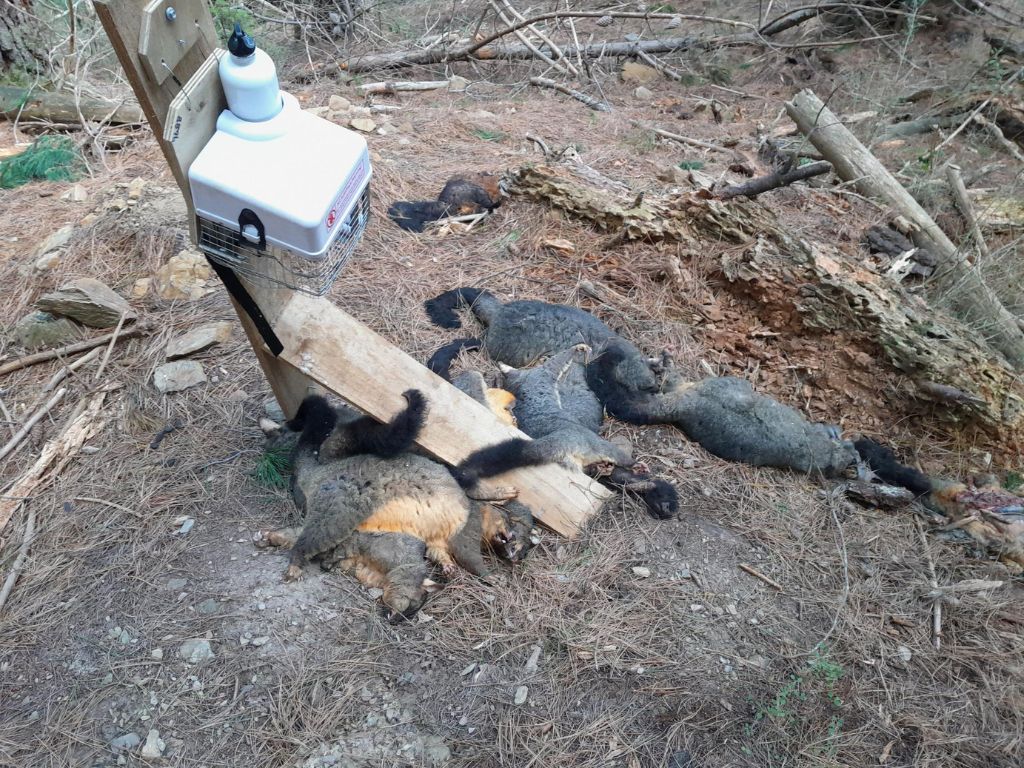Trappers are all too familiar with the time-intensive task of checking traps and replacing bait. But thanks to fully automated traps like the AT220, this is changing.

The team at New Zealand AutoTraps are pioneering what it means to be pest trappers in 2023. Having developed the AT220, a fully self-resetting possum and rat trap, means less trap checking and more pest catching.
The company’s operation manager, Haydn Steel, explains how important it is for pest tech to continue evolving.
“In the present climate of funding restrictions and labour shortages, innovation and automation are key so that existing and new groups can control pests in the most efficient manner possible.”
And what’s more efficient than a trap that resets itself?
The AT220 is tree-mounted with an open cage and spring-loaded mechanism that can self-reset up to 100 cycles. The automatic re-baiting pump mechanism means bait is always fresh and present.
This means the traps can technically be left for up to 4-6 months between services until the battery and lure need to be replaced (though some predator control experts prefer employing regular techniques to increase the attractiveness of your trap to potential predators if possible).
The trap now also connects to an app where you can access the kill counter and other trap data for monitoring purposes.

Haydn says his team are “always looking to improve our traps, so we listen to all suggestions made by our customers and act on the ones that we see merit in.” The relationship between trappers and trap makers allows for constant improvement.
There are currently some exciting prototypes in development, including a kea exclusion model and one with a microchip reader that will exclude domestic cats.
When it comes to predator control, it’s a race against time. But technological advances like this are giving us a chance at gaining the upper hand.
From teething problems to triumph
In 2016, Kevin Bain, the company’s technical manager and inventor, set out to create “a trap that not only reset itself but targeted multiple species to eliminate the need for multiple traps.” After achieving exactly that, the team has been refining it ever since.

The journey has been challenging. An external design review by professional engineers had to occur before the Gen2 version was released to Bay Bush Action in 2020 for a landscape-scale field trial, and even then, there were a few bumps in the road.
The Bay Bush Action Trust is a team of volunteers who do multi-species pest control in Opua State Forest, a 2,000-hectare lowland coastal forest in the Bay of Islands.
“Craig and the team at Bay Bush had a number of issues with the early model traps”, says Haydn. Despite this, they were still impressed with the results they achieved with the AT220, as stated in their report on the year-long trial.
“We expected there would be a few teething problems, and there were, but the results still blew us away! In just three months, monitoring showed rats had gone from 46.6% to 3.3%, and, 6 months on, 0%. One year on, they were still 0%.”
Monitoring signs for possums showed a similar decline: “Possum monitoring using wax tags in the field trial area went from 75% to 5% for the last quarter.”
Testing the trap in a large-scale field trial was vital for the changes that had to be made to get the trap to where it is today.
“With their feedback, we have now rectified these issues, and our latest model is performing exceptionally well,” says Haydn.
From Bay Bush to Bluff
The AT220 is now in widespread use throughout Aotearoa. From the Bay of Islands, Banks Peninsula and the Dunedin Halo Project to as far south as Bluff, the trap is helping groups across the country save time while they work to save our native species.
Bluff Hill Motupōhue Environment Trust is using around 150 AT220s and has ambitions to eventually reintroduce kiwi. While the traps are a substantial investment (a $495 per unit price tag), trust leader David Swann thinks it’s worth it when they’re catching multiple possums a night.
The Halo Project in Dunedin has been working with NZ AutoTraps for several years and has almost 900 in operation. While it’s not a perfect set up, errors are rare, and the data accumulated over thousands of trap nights speaks for itself.
Halo Project operations manager Jonah Kitto-Verhoef says the real-world and trail camera observations nearly match up with the AT220’s recorded data; if anything, the trap “slightly underestimates the number of possums controlled.”

“We can set and walk away knowing the AT220 is out there doing the hard work for us.”

